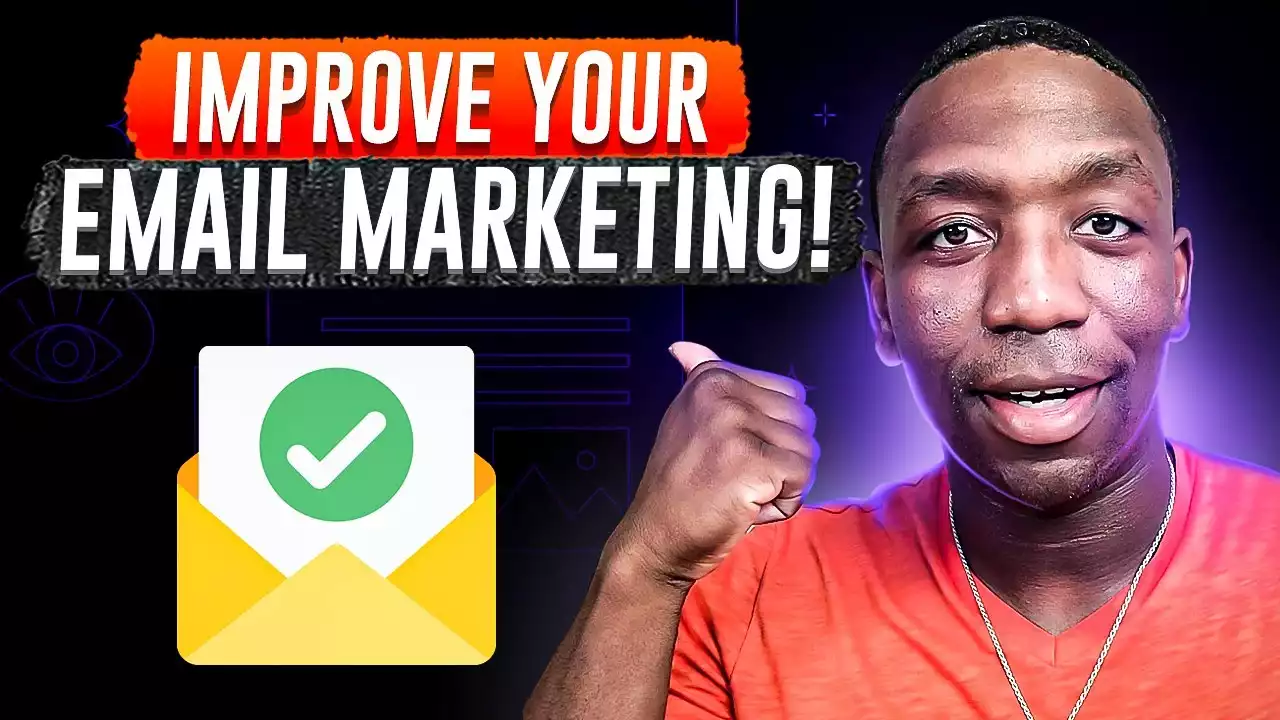The Power of Storytelling in Email Marketing
Storytelling is a powerful tool for businesses to connect with their audience. It allows you to create an emotional connection with your subscribers and humanize your brand. When done right, storytelling in email marketing can increase engagement, drive conversions, and ultimately, boost revenue.
One of the biggest advantages of storytelling in email marketing is that it helps you stand out in a crowded inbox. By telling a story, you're not just promoting your product or service, you're creating an experience for your subscribers. This experience can be more memorable and impactful than a traditional sales pitch.
Another advantage of storytelling in email marketing is that it allows you to communicate complex ideas in a simple and easy-to-understand way. Stories can help simplify complex concepts and make them more relatable to your audience. This can be particularly useful for businesses in technical or niche industries.
Overall, storytelling is a powerful tool for businesses looking to create a more engaging and memorable email marketing strategy.
The Elements of a Good Story
Before we dive into the specifics of crafting a story for email marketing, it's important to understand the elements of a good story. While there are many different types of stories, most successful stories share a few common elements.
One of the most important elements of a good story is a clear and relatable protagonist. Your protagonist should be someone your audience can identify with and root for. They should face a relatable challenge or problem that your audience can empathize with.
Another important element of a good story is a clear narrative arc. Your story should have a beginning, middle, and end. It should start by introducing your protagonist and their problem, then build suspense as they work to solve the problem, and finally, resolve the problem in a satisfying way.
Finally, a good story should have a clear message or takeaway. Your story should communicate a larger idea or lesson that your audience can apply to their own lives. This message should be clear and easy to understand.
By incorporating these elements into your storytelling, you can create a compelling and memorable story that resonates with your audience.
Types of Stories to Incorporate in Email Marketing
There are many different types of stories that you can incorporate into your email marketing strategy. The key is to choose a story that resonates with your audience and aligns with your brand message. Here are a few types of stories you can consider:
Customer Stories
Customer stories are a great way to showcase the impact your product or service has on real people. These stories can highlight the benefits of your product or service in a relatable and authentic way. They can also create a sense of social proof, showing potential customers that others have had positive experiences with your business.
When crafting a customer story, it's important to choose a customer who represents your target audience. This will make the story more relatable and impactful. You should also focus on the results your customer achieved, rather than just the features of your product or service.
Origin Stories
Origin stories are a great way to humanize your brand and showcase your values. These stories can highlight the founding of your business, the challenges you faced, and the values that drive your business today. Origin stories can create a sense of authenticity and trust with your audience, helping them feel more connected to your brand.
When crafting an origin story, focus on the values and mission of your business. You should also highlight the challenges you faced and how you overcame them. This can create a sense of empathy with your audience and make your brand more relatable.
Educational Stories
Educational stories are a great way to simplify complex concepts and make them more relatable to your audience. These stories can highlight the benefits of your product or service in a way that is easy to understand and apply. They can also position your business as an expert in your industry.
When crafting an educational story, focus on the problem your audience is facing and how your product or service can solve that problem. You should also focus on the benefits of your product or service, rather than just the features.
Overall, these are just a few types of stories you can incorporate into your email marketing strategy. The key is to choose a story that resonates with your audience and aligns with your brand message.
Crafting Your Story for Email Marketing
Once you've chosen a story to tell, it's important to craft it in a way that is engaging and effective for email marketing. Here are a few tips to keep in mind:
Keep it Short and Sweet
Emails are a brief communication format, so it's important to keep your story short and to the point. Focus on the most important details of your story and avoid unnecessary fluff. You can always link to a longer version of your story on your website if your audience wants to learn more.
Use Emotion to Connect with Your Audience
Emotion is a powerful tool in storytelling. Use emotional language to connect with your audience and make your story more memorable. You can use humor, empathy, or even sadness to create an emotional connection with your audience.
Use Visuals to Enhance Your Story
Visuals can enhance your story and make it more engaging for your audience. Consider adding images, videos, or even GIFs to your email to help tell your story. Visuals can also break up the text and make your email more visually appealing.
Focus on the Call-to-Action
While storytelling is important, the ultimate goal of your email is to drive conversions. Make sure you include a clear call-to-action in your email that aligns with your story. This can be a link to a product page, a sign-up form, or even a request for feedback.
By keeping these tips in mind, you can craft a compelling story that resonates with your audience and drives results for your business.
Tips for Effective Storytelling in Email Marketing
Crafting a story for email marketing is just the first step. Here are a few tips to help you tell your story in a way that is effective and engaging for your audience:
Understand Your Audience's Pain Points
To create a story that resonates with your audience, it's important to understand their pain points. What challenges do they face? What problems do they need solved? By understanding your audience's pain points, you can craft a story that speaks directly to their needs and interests.
Use a Consistent Voice and Tone
Consistency is key in email marketing. Make sure your story aligns with your brand voice and tone. This will help create a sense of authenticity and trust with your audience. If your brand is playful and lighthearted, make sure your story reflects that. If your brand is more serious and professional, make sure your story reflects that as well.
Craft a Narrative Arc
As we mentioned earlier, a clear narrative arc is an important element of a good story. Make sure your story has a beginning, middle, and end. This will help build suspense and keep your audience engaged.
Use Storytelling Techniques
There are many storytelling techniques you can use to make your story more engaging. For example, you can use foreshadowing to create suspense, or use repetition to drive a point home. You can also use sensory language to create a more vivid and memorable experience for your audience.
Use Data to Enhance Your Story
Data can be a powerful tool in storytelling. Use data to back up your claims or illustrate the impact of your product or service. Data can also create a sense of authority and expertise with your audience.
By using these tips, you can create a compelling and effective story that resonates with your audience and drives results for your business.
Examples of Successful Storytelling in Email Marketing
To help inspire your own storytelling efforts, here are a few examples of successful storytelling in email marketing:
Charity: Water
Charity: Water is a non-profit organization that brings clean and safe drinking water to people in developing countries. Their email marketing strategy is built around storytelling, using images and videos to showcase the impact of their work. One of their most successful campaigns was a series of emails that followed the journey of a girl named Mariame, who was able to attend school for the first time thanks to Charity: Water's work.
TOMS
TOMS is a shoe company that has built their brand around the concept of "One for One" - for every pair of shoes purchased, they donate a pair to someone in need. Their email marketing strategy is focused on storytelling, using images and videos to showcase the impact of their work. One of their most successful campaigns was a series of emails that followed the journey of a pair of shoes, from the factory where they were made to the feet of a child in need.
Airbnb
Airbnb is a platform that allows people to rent out their homes or apartments to travelers. Their email marketing strategy is built around storytelling, using images and videos to showcase the unique experiences available through their platform. One of their most successful campaigns was a series of emails that highlighted unique and unusual properties available for rent on Airbnb, such as treehouses, yurts, and even castles.
Overall, these examples demonstrate the power of storytelling in email marketing. By using compelling stories and visuals, these businesses were able to create an emotional connection with their audience and drive results for their business.
Tools to Enhance Your Storytelling in Email Marketing
There are many tools available to help enhance your storytelling efforts in email marketing. Here are a few tools you can consider:
Canva
Canva is a graphic design tool that allows you to create professional-looking images and graphics for your emails. You can use Canva to create custom images or choose from a library of templates.
Animoto
Animoto is a video creation tool that allows you to create professional-looking videos for your emails. You can use Animoto to create custom videos or choose from a library of templates.
Grammarly
Grammarly is a writing tool that helps you improve your grammar and spelling. You can use Grammarly to ensure your emails are error-free and easy to read.
Overall, these tools can help enhance your storytelling efforts and make your email marketing more effective.
Measuring the Success of Your Storytelling in Email Marketing
As with any marketing strategy, it's important to measure the success of your storytelling efforts in email marketing. Here are a few metrics you can track:
Open Rates
Your open rate measures how many people opened your email. A high open rate indicates that your subject line and preview text were effective in capturing your audience's attention.
Click-Through Rates
Your click-through rate measures how many people clicked on a link in your email. A high click-through rate indicates that your call-to-action was effective in driving engagement.
Conversion Rates
Your conversion rate measures how many people completed a desired action, such as making a purchase or filling out a form. A high conversion rate indicates that your storytelling and call-to-action were effective in driving results for your business.
By tracking these metrics, you can measure the success of your storytelling efforts and make adjustments as needed.









